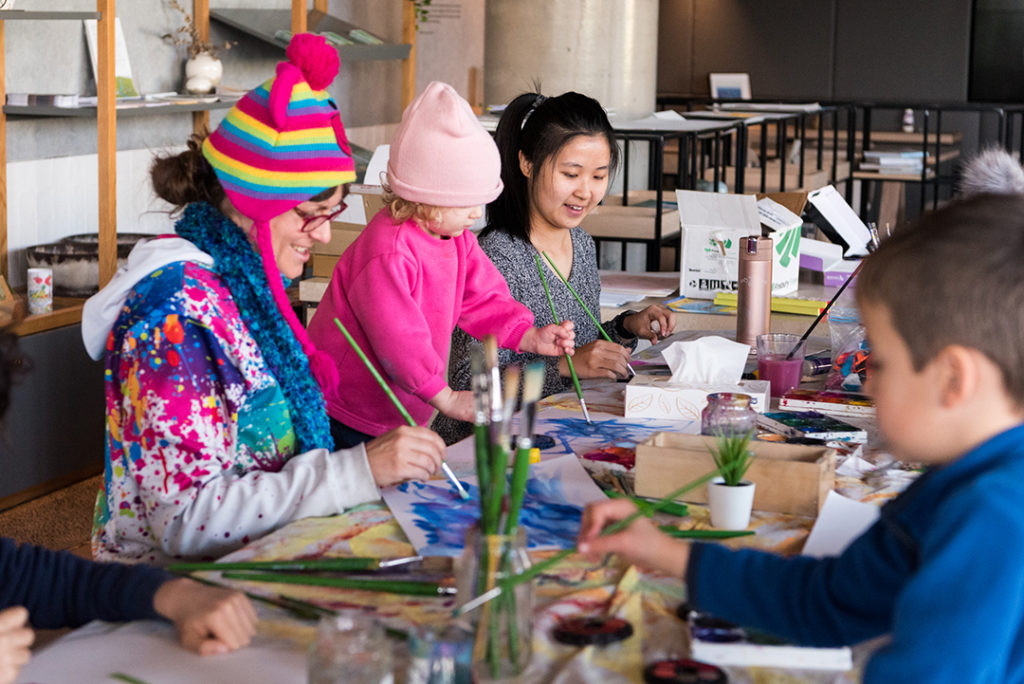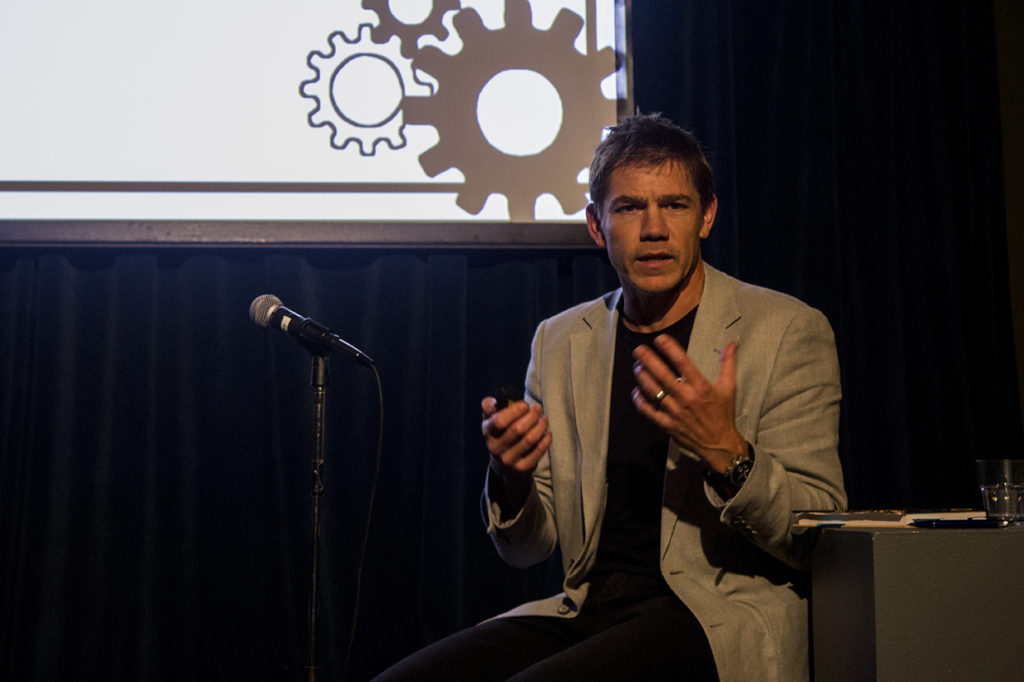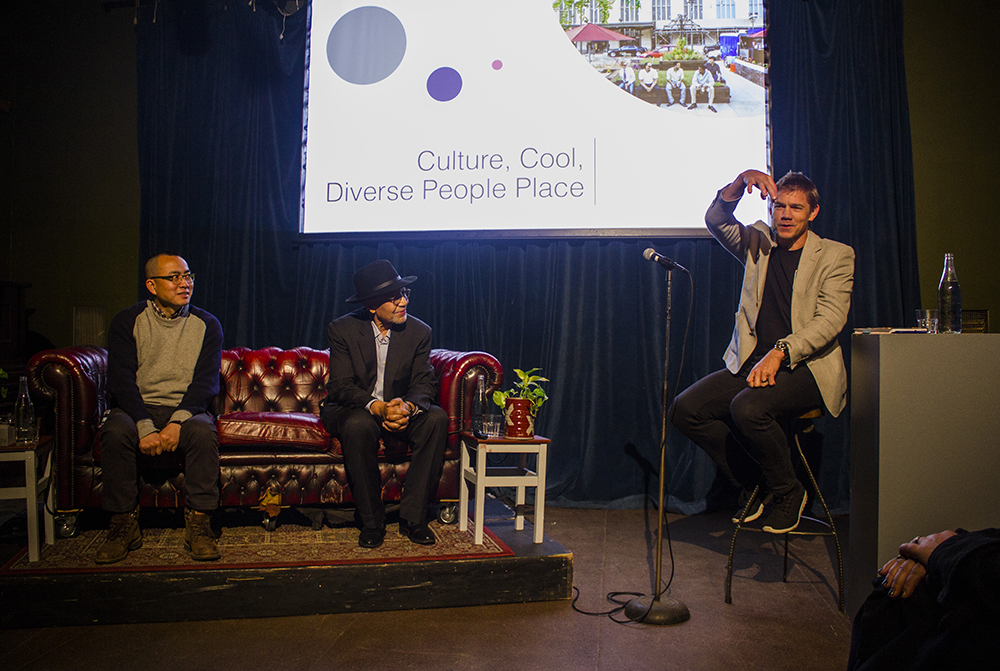#068
‘Placemaking’ as an outcome, not an industry:
Board member Duncan Read responds
Words Fay Edwards

This article is part of a series on ‘Placemaking’, inspired by and responding critically to Ed Blakely and Richard Hu’s book, Crafting Innovative Places for Australia’s Knowledge Economy.
In the first of the series, volunteer and community engagement officer Fay Edwards reflects on the concept of ‘Placemaking’: empty buzzword or the key to creating socially, culturally, and economically rich cities? Read more >
Recently, we hosted urban planning experts Ed Blakely and Richard Hu for a spirited discussion on making places – what it means, why good places matter, and how we can create spaces that really work for the communities that use them.
As facilitator of this discussion, 107 board member Duncan Read offered his experience as a strategic precinct advisor for ConnellGriffin and board member of 107. Inspired by this session, we asked Duncan to reflect on his time working with 107, and what he sees for the future of creative and community spaces in Sydney.

What does ‘Placemaking’ mean to you?
As a word I don’t like ‘Placemaking’, it actually makes me think of setting the table for dinner. Placemaking is not a ‘thing’, or a job or industry. I think Placemaking is an outcome – one that takes many years, many inputs and many people. I am pleased that the concept of ‘Placemaking’ is challenging people to think about how their decisions shape space, but ‘Placemaking’ will always fail if it is tacky or plugged in at the end. Places are a mix of complex influences – starting with connections to landscape and song and storylines that pass over them, and relationships to the buildings and materials we add over time. People who understand this, tend to shape meaningful places that attract people who then create stories of their own.
Why did you join 107 and what do you see as its role in the city?
I like working on projects that connect people and place. I joined 107 because it’s by the community, for the community. It is also a provocative place. It uses artists and creativity to start conversations. 107 punches above its weight. It operates on a shoestring budget but walks-the-talk by finding partners and volunteers to make spaces and design events which spark ideas. It makes a difference to local people and is the sort of place that can easily be squeezed out of a city, so it is great to be involved and help it grow.
People love living in and coming to Redfern. What makes this ‘place’ work so well? Is it the built environment? The people? The history?
It’s definitely the people and their stories. Redfern can be a difficult place, sometimes confronting. Many people here are marginalised, and live tough lives. But they have a remarkable welcome and a spirit of resilience. When I first came to Redfern I expected something very different, but locals proved me wrong and their love of Redfern and their stories rubbed off on me. It is a place that is raw and honest and it has changed me for the better.
Can you compare 107 Redfern and Joynton Avenue Creative Centre? What are the common features of these ‘places’, and what makes them uniquely different?
One thing that unites them is rapid change, but they are very different. Each place has its own character – 107 has lived in Redfern for a while and has a deeper understanding of its people and community. At Joynton we are meeting people for the first time – some have been there a long time, but many more are just arriving. In both spaces people tell us that they want a space to meet up, share ideas and learn from each other.

What are some of the things that have been important to keep in mind with both places? What elements are still missing?
Providing spaces like 107 is hard work and there are many challenges. The thing that has helped us most are the passionate, creative and determined people and partners who work with us. We are lucky at 107 to have some fantastic staff and generous volunteers and partners. They share our desire to make a difference by providing space for ideas where everyone is welcome.
Can you talk about some of the challenges you have experienced when trying to create places? In particular, what are some of the barriers to creating great places in Sydney?
I wish that in Sydney proposals for using places and buildings were judged on merit, not on compliance. The coolest spaces are created when people experiment. Ever increasing layers of planning codes and building regulations will lead us towards sameness and pre-determined outcomes. As this happens the best and most creative ideas will be stifled or fade away.
What makes you most excited about the future of Sydney? What opportunities do we have to make Sydney a better place for everyone?
I’m excited by the growing diversity and density of Sydney. When people meet, share stories and rub shoulders with people not like them, their insights change and capacity to think differently grows. Small bars, great public spaces, events and places like 107 encourage this. They can lead the way for people to meet up, work flexibly and provide a hotbed for new ideas and creativity.
